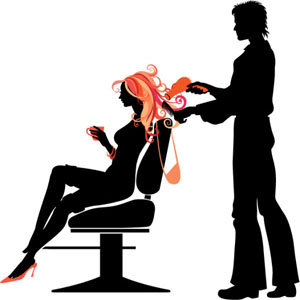I spent the five happiest years of my life in a morgue. As a forensic scientist in the Cleveland coroner’s office I analyzed gunshot residue on hands and clothing, hairs, fibers, paint, glass, DNA, blood and many other forms of trace evidence, as well as crime scenes. Now I'm a certified latent print examiner and CSI for a police department in Florida. I also write a series of forensic suspense novels, turning the day job into fiction. My books have been translated into six languages.
Most agencies do not have huge staffs like on TV, and people tend to stay in the field. Thanks to the TV shows there is a universe more competition than I faced. On the other hand thanks to the current emphasis on forensics, agencies are always expanding--the federal government will be setting mandates and providing grant money to expand labs and services Check out every level (city, county, state, federal) in your area that you can find and also private labs. Check the websites for the International Association for Identification and the American Academy of Forensic Sciences.
The title 'forensic scientist' doesn't mean anything in particular--job titles will vary by the agency. It would be better to major in a natural science or in forensic science so you could get as much lab experience as possible, but the only way to know for sure what the job requirements are is to call the place(s) you want to work and ask.
Temporarily, with sandpaper or chemicals, but they will grow back in the same pattern.
It could help if it's pulled hair, not cut, and if they were super-careful to leave no fingerprints or any other kind of possible DNA samples so that the police had no choice but to test the hairs for possible suspect DNA. It would also depend on the scene--if it's a heavily traveled bank, for instance, so there is a ton of discarded hairs, the police would hardly test them all. If they leave a tuft of hair on say, a chain-link fence used to get away, where the police couldn't help but notice it, then they'd have a better chance of making it a useful diversion.
Nightclub Promoter
 Is bottle service worth the money, or is it a total scam?
Is bottle service worth the money, or is it a total scam?
Hairstylist and Makeup Artist
 What's the grossest hair ailment you ever saw?
What's the grossest hair ailment you ever saw?
Fashion Model
 Do you feel objectified when you're standing around in skimpy outfits?
Do you feel objectified when you're standing around in skimpy outfits?
1. Review earlier answers to similar questions.2. Take as many science classes as you can.3. Check out the websites of the American Academy of Forensic Sciences and the International Association for Identification and any others you can find, and look at their Employment Opportunities section. Job postings will tell you what qualifications are required.4. Call all the crime labs in your area (city, county, state and any other location where you might want to work) and ask what degrees their staff have and what are required. (For instance my agency only requires a HS diploma but we all have at least a B.S.) Every agency will have their own requirements. Best of luck to you!!!!
I would never want to discourage someone from this field because I love it. But it's a very popular field right now so I would also advise anyone to have a career plan B.
See above. I have a bachelor's degree in biology, plus over a thousand hours of continuing education in forensic topics (accumulated over 20 years).
-OR-
 Login with Facebook
Login with Facebook (max 20 characters - letters, numbers, and underscores only. Note that your username is private, and you have the option to choose an alias when asking questions or hosting a Q&A.)
(A valid e-mail address is required. Your e-mail will not be shared with anyone.)
(min 5 characters)
By checking this box, you acknowledge that you have read and agree to Jobstr.com’s Terms and Privacy Policy.
-OR-
 Register with Facebook
Register with Facebook(Don't worry: you'll be able to choose an alias when asking questions or hosting a Q&A.)